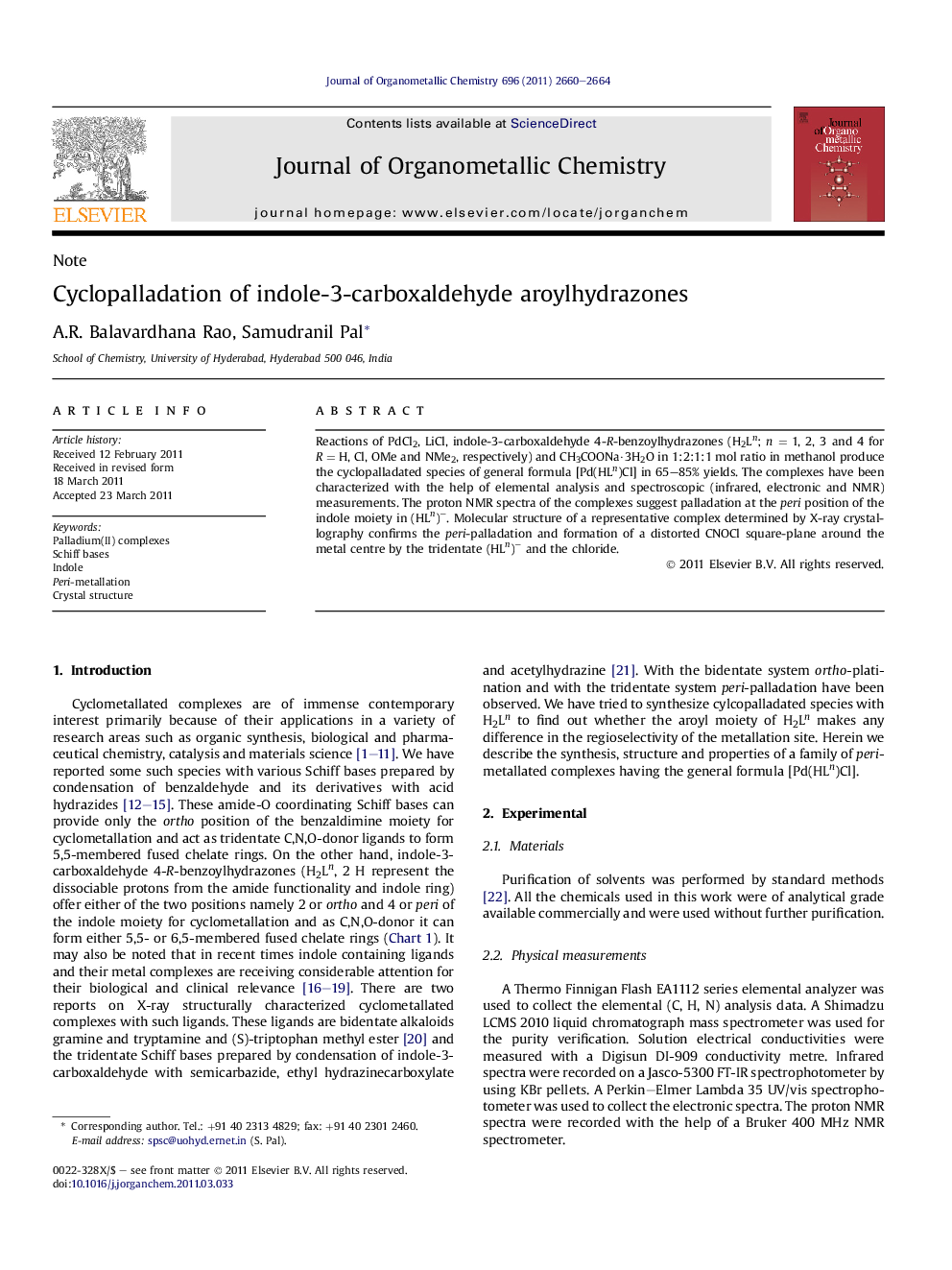| Article ID | Journal | Published Year | Pages | File Type |
|---|---|---|---|---|
| 1325347 | Journal of Organometallic Chemistry | 2011 | 5 Pages |
Reactions of PdCl2, LiCl, indole-3-carboxaldehyde 4-R-benzoylhydrazones (H2Ln; n = 1, 2, 3 and 4 for R = H, Cl, OMe and NMe2, respectively) and CH3COONa·3H2O in 1:2:1:1 mol ratio in methanol produce the cyclopalladated species of general formula [Pd(HLn)Cl] in 65–85% yields. The complexes have been characterized with the help of elemental analysis and spectroscopic (infrared, electronic and NMR) measurements. The proton NMR spectra of the complexes suggest palladation at the peri position of the indole moiety in (HLn)−. Molecular structure of a representative complex determined by X-ray crystallography confirms the peri-palladation and formation of a distorted CNOCl square-plane around the metal centre by the tridentate (HLn)− and the chloride.
Graphical abstractSynthesis and characterization of cyclopalladated complexes, [Pd(HLn)Cl], with indole-3-carboxaldehyde aroylhydrazones (H2Ln) have been reported. In these complexes, the cyclopalladation occurs in a regioselective manner at the peri-position of the indole fragment of (HLn)− leading to the formation of 6,5-membered fused chelate rings.Figure optionsDownload full-size imageDownload as PowerPoint slideHighlights► Reactions of PdCl2, LiCl, indole-3-carboxaldehyde 4-R-benzoylhydrazones and CH3COONa·3H2O in methanol produce cyclometallated complexes. ► The complexes were characterized by microanalyses and spectroscopic measurements. ► The 4- or peri-position instead of the 2- or ortho-position of the indole moiety is preferred for cyclopalladation. ► Peri-palladation has been confirmed by X-ray structure of a representative complex.
